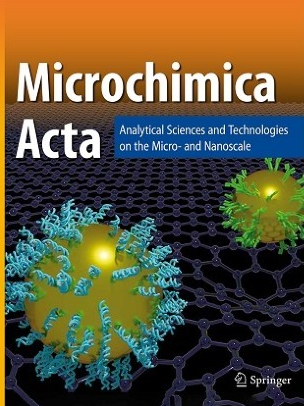An effective strategy based on electrostatic interaction for the simultaneous sequential purification and isolation of exosomes
Abstract
A material-based strategy was developed to achieve the simultaneous purification and isolation of exosomes from serum and urine. Based on the combination of electrostatic interaction and hydrophobic interaction, polyacrylic acid (PAA)–coated anionic nanoparticles (Fe3O4@PAA) were used to remove positively charged contaminant proteins and neutral proteins, and polyethyleneimine (PEI)-functionalized cationic nanoparticles (Fe3O4@PEI) were applied to remove negatively charged contaminant proteins as well as capture and mild release of negatively charged exosome. By employing this strategy (denoted as PAA-PEI), a high recovery (> 95%) of serum exosomes was achieved with a high removal efficiency of protein contaminants (87%). The strategy was further applied to purify and isolate urinary exosomes, followed by downstream proteomics analysis. Compared with the standard isolation method of ultracentrifugation (UC), the PAA-PEI strategy shows high contaminant protein removal efficiency (98.6%) and obtains a higher concentration of exosomes. Using the PAA-PEI strategy, more urinary exosomal proteins (124) than UC (92) were identified. These results indicate that the PAA-PEI strategy is not only excellent in exosome capture but also effectively mitigates the interference of protein contamination. Given that the PAA-PEI strategy demonstrates a high protein contaminant removal efficiency and requires less cost and time (1 h) than UC (3 h), it would be a promising candidate method for efficiently purifying and isolating exosomes from complex biological samples for early discovery and diagnosis diseases. Furthermore, this study provides a new direction for emphasizing the issue of protein interference in the development of biological sample isolation methods.
Graphical Abstract


 求助内容:
求助内容: 应助结果提醒方式:
应助结果提醒方式:


